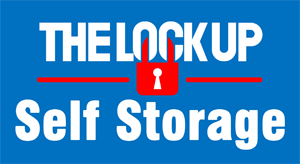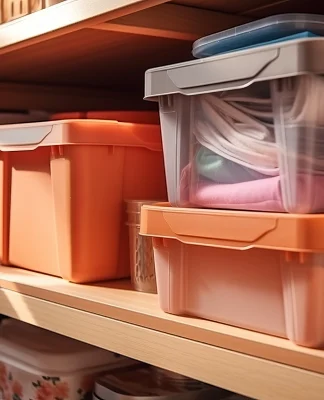Since the beginning of the pandemic, many people have begun to prioritize a healthier work-life balance away from the office. This created an influx of domestic travel and remote working opportunities. Today, the effects of office closures and working from home remains and many people are looking at how they can make life on the road a full-time option. While it’s never been easier, it’s not practical to travel from place to place with all of your worldly belongings. If you’re interested in giving this lifestyle a chance, here’s more information on how to prepare for living on the road.
Deciding Your Method of Living
With an increase in remote work and digital nomad lifestyles, there are several different options for living your life on the road. The first step in preparing for this process is to determine where you plan to live.
RV or Van Life
The rise of van life and full-time RV living has become one of the most popular options for taking your life on the road in recent years. Both options give you the freedom and flexibility to go where you want, when you want, without having to pay for accommodation or rent. If you plan to live out of a vehicle full-time, you’ll need to find an appropriately sized van for your family and lifestyle needs. You’ll also need to make sure it’s equipped with everything you need while on the go.
Living on a Boat
While this option isn’t exactly living on the “road,” the idea is the same as van life. When you live on a mobile houseboat or sailboat, you’ll be moving from one destination to another without returning to a permanent residency on land. This option isn’t for everyone, but if you enjoy being on the open water it’s worth exploring. Preparations will include finding a boat, learning how to sail or navigate it, and taking the proper safety courses for open water life.
Hotels or House Rentals
Another popular option for people who aren’t interested in dealing with logistics of owning a vehicle is living out of hotels, Airbnb’s, or housing exchanges/rentals. This will require the least preparation logistically speaking, but you’ll need to downsize a decent amount to make this option more accessible.
6 Steps to Prepare for Life on the Road
After deciding which option is best for you, it’s time to get to work. These steps can be applied for whatever style of living on the road you choose using a few amendments.
1. Make Sure You Can Work Remotely
This might seem obvious, but the first step in preparing for life on the road is making sure that you can work remotely. Remote work might not apply to those with substantial savings or individuals who are retired, but everyone else will need some source of income to make living on the road sustainable. Thankfully, the pandemic has made many businesses realize the benefits of remote work and many companies allow their employees to choose between working remotely or going into the office. Since the time change isn’t too variable from coast to coast in the U.S., ask your current company about how they’d feel if you transitioned to a 100% remote employee. If they’re not comfortable with this, consider looking for a company that is.
2. Take Inventory of What You Own
Once you have all of the logistics sorted out and you’ve made a decision on your preferred method of life on the road, it’s time to start going through your belongings. If you live in a one-bedroom apartment or studio, this may be fairly easy. However, most people who transition their lifestyle will need to go through several rooms of furniture and belongings, which takes time. Begin by creating an inventory of everything you own. This doesn’t have to be extremely specific, but an overview of your furniture, appliances, larger items, collections, etc. can help you get a better understanding of the task at hand.
3. Keep the Essentials
This is going to be the hardest part of preparing for life on the road. While it might seem overwhelming, you really don’t need much when you’re continually in motion. You can easily re-wear outfits in different places, do laundry as needed, and you’ll replace the need for material things with new and exciting backyards. To begin, keep some essential pieces of clothing. You should keep your favorites along with plenty of options to create a capsule wardrobe. This is a type of wardrobe that incorporates one color scheme and various statement pieces that can be mixed and matched to create a variety of different outfits.
You’ll also want to keep some essential kitchen tools and dishes, especially those that you use regularly. For example, if you have a smoothie every single day, make sure your RV or houseboat has a blender for you to use on the go. However, avoid keeping too many kitchen items as these are bulky and can take up a lot of space. It’s impractical to lug around appliances or kitchenware from hotel to hotel, so consider how to make practical adjustments. Keep a few pieces of your favorite décor or art to make your space on the go feel like home, but don’t bring bulky holiday decorations or unnecessary clutter. The remaining things you’ll need will be a few pairs of shoes, toiletries, and ways to entertain yourself (i.e., books, art supplies, a guitar). If working remotely, keep everything you’ll need to perform your job on the go.
4. Declutter and Downsize
You can do this step at the same time as you set aside essentials, or after you’ve chosen a few key items. Separating them may make it easier to downsize, but some people prefer to assess one item at a time and sort them accordingly. Take the time to declutter and downsize items you won’t be bringing along. You may choose to donate these, sell them, give them to friends or family, or even throw them away.
5. Rent a Self-Storage Unit
If you absolutely cannot part with an item but don’t have the room to take it along, put it aside. When you’ve gone through all of your things, you may find that you don’t want to part with a lot of your belongings. That’s okay. All you need to do is rent a self-storage unit that will house your items while you’re on the go. This is a great way to test out life on the road without making major commitments and gives you the space you need to keep family heirlooms, antiques, or collections you’ve been growing for years.
6. List Your House for Sale or Rent
When renting, transitioning to life on the road is easy—simply don’t renew your lease. However, if you own a home, apartment, or condo, you’ll need to decide what you’re going to do with the space while you’re gone. You may want to rent it out to make passive income, but you’ll need to hire a property manager to care for repairs and maintenance while you’re away. If you decide to sell your home, work with a real estate agent to get it listed and on the market.
7. Have a Going Away Party
Once you’ve taken care of all of the preparations, it’s time to celebrate. Moving away from friends and family can be stressful, but life on the road means that you can visit whenever you want. So, take this opportunity to celebrate your time together with a going away party instead.
Living on the road can open up a world of opportunities, but it can be scary to get rid of everything you own. To make sure you’re comfortable during your transition, The Lock Up Self Storage provides short- and long-term leasing options for self-storage units of all sizes. This will give you the perfect chance to test out your life on the road without much risk. We have multiple locations around the U.S and all of our units are climate-controlled to keep your things in the best condition possible while you’re away. To give you even more peace of mind, our locations are equipped with top-of-the-line security features. Our self-storage facilities have security-controlled gate access, motion-sensitive lighting, 24-hour camera monitoring, and perimeter alarms. Many of our locations also offer electronic coded access specific to each tenant. To find a self-storage unit, contact one of the representatives at The Lock Up Self Storage by calling us at 1-866-327-LOCK or find a unit online today!



















